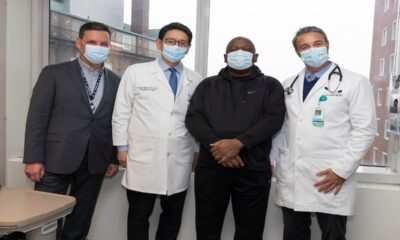In January, journalists, corporate consultants and restructuring specialists filled up a Hong Kong courtroom in a rare scene to attend Evergrande’s winding-up hearing where judge Linda Chan declared “enough is enough” and handed down a liquidation order.
The landmark case involving China’s once-biggest property developer by sales with more than $300bn in liabilities has put the territory’s legal framework for resolving debt problems back in the spotlight. More than 20 Chinese developers have been slapped with winding-up petitions in Hong Kong since China’s real estate crisis began in 2021, with at least five being ordered to be wound up by a Hong Kong judge.
This is not a great result for any of the parties involved. Often described as a “nuclear option” and a lose-lose scenario by lawyers, these winding-up court proceedings leave creditors with little to no return. And proceedings can drag out for many months.
Lawyers and restructuring specialists say Hong Kong’s legal framework for other debt restructuring options is lacking compared with financial jurisdictions such as London, New York and Singapore.
A restructuring bill to remedy this has been in discussion for more than 20 years in the Asian financial hub but other legislative priorities have taken precedence amid a lack of consensus on what it should contain. The last push to introduce one came in 2020 when a draft legislative proposal was made as the Covid-19 pandemic struck.
The Hong Kong government carried out a consultation but later put the plan again on hold. Although it said it would continue to consult stakeholders to refine the legislative proposals, there does not appear to be a timeframe for that.
Lawyers said there was a pressing need to raise the proposal back up the agenda, particularly as offshore creditors increasingly use Hong Kong courts to force distressed Chinese developers into speeding up their restructuring plans.
Chinese developers have defaulted on a massive $115bn of $175bn in outstanding offshore dollar bonds since 2021, according to Bloomberg data. And property developer Shimao last month became one of the latest to face a winding-up petition, unusually from a Chinese state-backed bank. Country Garden, which defaulted in October, received a winding-up petition in February involving more than $200mn worth of debt.
A key element of a restructuring bill is that after the appointment of a supervisor for a debt restructuring, a statutory moratorium would be imposed to halt parties from rushing off to court and asking for a winding up.
Under the current legal system in Hong Kong, creditors are free to go after distressed companies by filing wind-up petitions before a scheme of arrangement for a restructuring is agreed and then approved by a court, according to Jamie Stranger, a Hong Kong-based partner at Stephenson Harwood.
Law firm Herbert Smith Freehills says this gives “dissenting creditors significant leverage to hold the company and other consenting creditors to ransom and otherwise encourages ‘rogue’ behaviour by them, which in turn jeopardises the restructuring efforts”. It adds: “This often leads to a worse outcome for all interested parties where there is a genuine prospect that the restructured business would be able to trade out of its difficulties.”
One problem is to what extent would a restructuring bill cover mainland Chinese assets. Under the existing winding-up process in Hong Kong, it is very unlikely for offshore creditors to get back any onshore mainland assets. This is despite a “mutual recognition agreement” on insolvency and restructuring rolled out in 2021 that applies in some parts of mainland China. Offshore creditors remain typically subordinated to onshore stakeholders, lawyers say.
A bill “would need to interface with the mainland laws and provide some ability for a provisional supervisor to be recognised and assisted in the mainland”, Jonathan Leitch, a Hong Kong-based partner at Hogan Lovells, told me. Otherwise, the roles of a Hong Kong-based provisional supervisor in most cases “would be severely hampered”.
Lance Jiang, a partner in restructuring and insolvency at law firm Ashurst, says: “Most practitioners would like to have the new restructuring bill, because it definitely mitigates the gap between Hong Kong and other international centres and would give the companies and also the creditors side with more options to do consensual restructuring.”
“It’s Hong Kong, you know, the legislative council can do it quickly, efficiently,” says Jiang, adding that this would benefit everyone in the market.
thomas.chan@ft.com


































